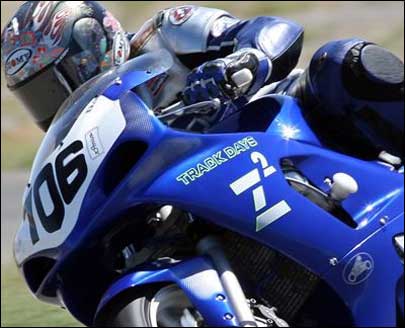A Northern California company known as Zoomius has joined the growing ranks of race-timing companies offering RFID-based solutions that employ passive RFID EPC Gen 2 tags and readers. At a late August motorcycle race held at the Reno-Fernley Raceway, hosted by Zoom Zoom Events Corp. (Z2), and sanctioned by the United States Grand Prix Racers Union, Zoomius road-tested its Titan RFID timing system, which it says was a winner.
The system utilizes passive RFID adhesive labels containing the M inlay (ALN-9554) manufactured by Alien Technology, as well as the Mercury 5e reader from ThingMagic. According to Keane, the reader feeds the tag data to Zoomius’ Tiger software, which uses a proprietary method to determine the speed and location of each vehicle as it approaches and passes a read zone.
“We were extremely impressed,” says David Ben-Jamin, chief operating officer of Zoom Zoom Events Corp. “We’ve used the other, transponder-based system in other races, but with Zoomius we found higher accuracy rates.” Z2 plans to use the Zoomius system again in the future, Ben-Jamin says, noting that because the system is so new, it will need to be continually vetted. “It’s not totally plug-and-play yet, but we think that [passive] RFID is the future [of motorsports timing].”
During initial tests, Ben-Jamin says, he and Keane’s team needed to be careful regarding how they mounted the tags on the motorcycle fairings. “We had to have it oriented a certain way,” he explains, “but by the end of the day, when we timed a 250-kilometer endurance race, we read each tag on each lap, and the race lasted two and a half hours.”
Zoomius’ prime target customers are race organizers offering “track days”—organized events in which members of the public can access motor racing facilities and try their hand at the course, either on motorbikes or in cars. But the company also serves racing schools and racing circuits. The Tiger software provides online registration and information management systems for applications. This data management tool can be employed by track day organizers to maintain a record of lap times, split times, overall times and team statistics for their clients.
Many vehicular race organizers currently utilize active RFID tracking systems to track vehicles’ performance on the course, Keane says, adding that AMB is the largest vendor of such systems. The systems are powered by battery, or by pulling energy from a car using a 12-volt charging system. But these active transponders are significantly more costly than passive RFID tags—which Zoomius offers its customers for 40 cents each.The passive system, Keane says, has proven to be within a few thousandths of a second in accuracy, when compared against an AMB system. According to AMB, its timing system is accurate to one thousandth of a second, but Keane says the Zoomius timing system’s accuracy is good enough for all race organizers—be they race day organizers or top elite racers.
In early testing, Keane reports, Zoomius found that a tag was sometimes unreadable because a motorcycle or vehicle was positioned between that tag and a reader antenna on the course. Zoomius has addressed this problem by mounting antennas on a bridge above each of the course’s read zones.
Zoomius is currently developing its own reader antennas, which Keane says will provide reading coverage all around a race track, using a proprietary design. The firm presently employs off-the-shelf antennas that are suspended over a racecourse to create read zones.
As far as speed limits with the new system—that is, whether the tags become unreadable when passing too quickly through a read zone—Keane indicates that during the test event the company timed last month, the system was able to detect the tags at the motorcycle’s top speeds on the Reno-Fernley course. “The track has a long straightaway, and we clocked racers at 180 miles per hour,” he states.
Because the tags are placed either on a motorcycle’s plastic fairing or on a car’s glass windshield, Keane says, the metal vehicle frames do not cause interference that would make the RFID tag unreadable. Therefore, no special materials are required behind the tag to provide buffering.
Another company that has tested Alien’s passive EPC Gen 2 tags for a timing application is Hardcard, which is also considering using the tags for attendee access control and credentials. What’s more, a sports timing company known as ChronoTrack has developed an EPC Gen 2 tracking system for footraces (see Gen 2 Tags Track Runner, Motorcycle Speeds).
In fact, when it comes to using Gen 2 tags for foot-race timing, the field of vendors is beginning to get competitive. Both IPICO and Racetimer are also offering EPC Gen 2-based timing systems (see IPICO Enters Race for RFID Sports Timing and UHF Tags Enter the Timing Race). All three vendors say that by making the tags inexpensive and disposable, they offer a lower cost of entry and easier system deployment than legacy RFID timing systems based on non-disposable low-frequency tags.


